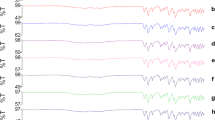Abstract
The contact angles of saturated calcium dodecanoate (CaC12) solutions containing a second subsaturated surfactant on a precipitated CaC12 surface were measured by using the drop shape analysis technique. The subsaturated surfactants used were anionic sodium dodecylsulfate (NaDS), anionic sodium octanoate (NaC8), and nonionic nonylphenol polyethoxylate (NPE). Comparing at the critical micelle concentration (CMC) for each surfactant, NaC8 was the best wetting agent, followed by NaDS, with NPE as the poorest wetter (contact angles of 320, 420, and 620, respectively). Surface tension at the CMC increased in the order NaC8<NPE<NaDS, and subsaturated surfactant adsorption increased in the order NPE≪NaDS (1.4 vs. 84 μmole/g); adsorption of the NaC8 was not measurable. Interfacial tension (IFT) reduction at the solid-liquid interface due to subsaturated surfactant adsorption is an important contribution to contact angle reduction, in addition to surface tension reduction at the air-water interface. Surfactant adsorption onto the soap scum solid is crucial to solid-liquid IFT reduction and to good wetting. The fatty acid was the best wetting agent of the three surfactants studied, probably because calcium bridging with the carboxylate group synergizes surfactant adsorption onto the solid of the higher molecular weight soap. NaCl added to NaDS surfactant results in depressed CMC, lower surface tension at the CMC, decreased NaDS adsorption onto the solid, and decreased reduction in solid-liquid IFT. The contact angle is not dependent on the NaCl concentration for NaDS. The NaCl causes an increased tendency to form monolayers, which decrease air-water surface tension, but a decreased tendency to form adsorbed aggregates on the solid; the two trends offset each other, so wettability is not affected by added salt. The Zisman equation does not describe the wetting data for these systems well except for NaDS, further emphasizing the danger of ignoring solid-liquid IFT reduction in interpreting wetting data in these systems.
Similar content being viewed by others
Abbreviations
- CCD:
-
charge-couple device
- CMC:
-
critical micelle concentration
- HPLG:
-
high-performance liquid chromatography
- IFT:
-
interfacial tension
- NaDS:
-
sodium dodecylsulfate
- NPE:
-
nonylphenol polyethoxylate
- UV-VIS:
-
ultraviolet-visible spectrophotometry
References
Rosen, M.J., Surfactant and Interfacial Phenomena, 3rd edn., John Wiley and Sons, New York, 2004, ch. 6.
Kabza, K., J.E. Gestwicki, and J.L. McGrath, Contact Angle Goniometry as a Tool for Surface Tension Measurements of Solids Using Zisman Plot Method, J. Chem. Educ. 77:63 (2000).
Sis, H., and S. Chander, Adsorption and Contact Angle of Single and Binary Mixtures of Surfactants on Apatite, Miner. Eng. 16:839 (2003).
Janczuk, B., W. Wojcik, and A. Zdiziennicka, Wettability and Surface Free Energy of Glass in the Presence of Cetyltrimethylammonium Bromide, Mater. Chem. Phys. 58:166 (1998).
Zdziennicka, A., B. Janczuk, and W. Wojcik, Wettability of Polytetrafluoroethylene by Aqueous Solutions of Two Anionic Surfactant Mixtures, J. Colloid Interface Sci. 268:200 (2003).
Zhou, Q., Y. Wu, and M. Rosen, Surfactant-Surfactant Molecular Interactions in Mixed Monolayers at Highly Hydrophobic Solid/Aqueous Solution Interface and Their Relationship to Enhanced Spreading on the Solid Substrate, Langmuir 19:7955 (2003).
Kwok, D.Y., T. Gietzelt, K. Grundke, H.J. Jacobasch, and A.W. Neumann, Contact Angle Measurements and Contact Angle Interpretation. 1. Contact Angle Measurements by Axisymetric Drop Analysis and Goniometer Sessile Drop Technique, Langmuir 13:2880 (1997).
Kwok, D.Y., C.N.C. Lam, A. Li, A. Leung, R. Wu, E. Mok, and A.W. Neumann, Measurement and Interpreting Contact Angles: A Complex Issue, Colloids Surf. A 142:219 (1998).
Marmur, A., Equilibrium Contact Angles: Theory and Measurement, Colloids Surf. A 116:55 (1996).
Luangpirom, N., N. Dechabumphen, C. Saiwan, and J.F. Scamehorn, Contact Angle of Surfactant Solutions on Precipitated Surfactant Surfaces, J. Surf. Deterg. 4:367 (2001)
Adamson, A.W., Physical Chemistry of Surfaces, 5th edn., John Wiley and Sons, New York, 1990, ch. 2.
Hernainz, F., and A. Caro, Contact Angle and Surface Tension in the Celestite/Sodium Oleate Aqueous Solution/Air System, J. Chem. Eng. 46:107 (2001).
Balasuwatthi, P., N. Dechabumphen, C. Saiwan, and J.F. Scamehorn, Contact Angle of Surfactant Solutions on Precipitated Surfactant Surfaces. II. Effect of Surfactant Structure, Presence of a Subsaturated Surfactant, pH, and Counterion/Surfactant Ratio, J. Surf. Deterg. 6:1329 (2003).
Riviello, A.E., J.F. Scamehorn, and S.D. Christian, Mechanisms of Collector Chemistry in Flotation Deinking: I. Importance of Surfactant Adsorption on Ink, Solutions 84:1 (2001).
Rosen, M.J., and M. Dahanayake, Industrial Utilization of Surfactant: Principles and Practice, American Oil Chemists Society, Champaign, IL, 2000, pp. 40–46.
Garrett, P.R., The Mode of Action of Antifoams, in Defoaming, edited by P.R. Garrett, Marcel Dekker, New York, 1993, p. 1.
Author information
Authors and Affiliations
Corresponding author
About this article
Cite this article
Luepakdeesakoon, B., Saiwan, C. & Scamehorn, J.F. Contact angle of surfactant solutions on precipitated surfactant surfaces. III. Effects of subsaturated anionic and nonionic surfactants and NaCl. J Surfact Deterg 9, 125–136 (2006). https://doi.org/10.1007/s11743-006-0381-z
Received:
Accepted:
Issue Date:
DOI: https://doi.org/10.1007/s11743-006-0381-z




